
ESPAÑOL
Cliente: Mode Gauken, Tokyo
Arquitecto: Paul Noritaka Tange, Tange Associates
Ingeniero Estructural: Masato Minami, Arup Japan
Tipo: Edificio Alto
Altura: 204 metros
Plantas: 50 + 3 bajo rasante
Uso: Educacional
Estructura: Mixta, acero y tubos rellenos de hormigón
+ amortiguadores a prueba de terremotos
La “Mode Gakuen Cocoon Tower”, un edificio localizado en el distrito financiero de Nishi-Shinjuku, se ha convertido no sólo en un nuevo icono arquitectónico para la ciudad de Tokyo, sino que además consiguió el prestigioso Premio Emporis en 2008 convirtiéndose en uno de los high-rise más espectaculares del mundo. La majestuosa torre de color blanco denominada “Cocoon Tower”, como su propio nombre indica, simula un enorme “capullo” incubador que dispone de 50 plantas con una altura estructural de 204 metros en el que se alojan tres escuelas de formación profesional; moda, información y tecnología y medicina. El nuevo edificio diseñado por el arquitecto Paul Noritaka Tange, de la firma Tange Associates e hijo del prestigioso arquitecto Kenzo Tange, ha sido imaginado por su creador como un auténtico Campus vertical para acoger a unos 10.000 estudiantes. Las tres escuelas se distribuyen verticalmente mediante tres niveles distintos; un nivel inferior, un nivel medio y otro superior, con su característica forma elíptica.


Planta 21 / Floor 21
Varios Salones de estudiantes se distribuyen también en diferentes niveles del edificio para ofrecer espacios para el descanso y el recreo; estas salas están formadas por tres plantas diáfanas con maravillosas vistas panorámicas a la ciudad. La distribución de cada planta es sencilla, tres elementos rectangulares formando 120º entre ellos se han situado alrededor del núcleo centralizado de escaleras, ascensores e instalaciones a modo de aulas para acoger a los estudiantes. La innovadora fachada esta compuesta por un sistema innovador de muro cortina con su característica curvatura de forma elíptica con la que se consigue un enorme ahorro energético gracias a su estructura perimetral, que a modo de malla y que envuelve a la incubadora, consigue que los rayos solares no penetren en su interior; a la vez, con su forma ovalada, el edificio ofrece menor resistencia frente al fuerte viento. Tange tuvo que introducir diferentes amortiguadores en el núcleo central para contrarestar los movimientos sísmicos tan frecuentes en esta zona geográfica durante gran parte del año.

La parte inferior de la Cocoon Tower ofrece una menor sección en planta a nivel de calle debido a su esbeltez y ligereza, espacio este aprovechado por Tange para destinarlo a zonas verdes. Mientras tanto, la sección de la parte superior del edificio, aprovechando la forma de la curvatura elíptica, ofrece vistas al cielo y a la ciudad sin ningún tipo de obstáculo en medio. Un edificio redondo de menores dimensiones se sitúa anexo al Campus vertical que forma también parte del importante proyecto. Éste, consiste en un edificio con forma de huevo que alberga dos salas principales compuestas por un Hall y una Sala denominada B, en la que a modo de auditorio con una capacidad para unas 1.000 sillas, se pueden celebrar diferentes actos durante todo el año. La Cocoon Tower es en la actualidad el segundo edificio educacional más alto del mundo sólo por detrás de la Universidad Lomonosov de Moscú, en Rusia, que cuenta con 239 metros de altura en su punto más alto.

ENGLISH
Client: Mode Gauken, Tokyo
Architect: Paul Noritaka Tange, Tange Associates
Structural Engineer: Masato Minami, Arup Japan
Type: Building High
Height: 204 meters
Plants: 50 3 below ground
Use: Educational
Structure: Mixed, steel and concrete-filled tubes
Earthquake-proof cushions
The "Mode Gakuen Cocoon Tower", a building located in the financial district of Nishi-Shinjuku, has become not only a new architectural icon for the city of Tokyo, but also won the prestigious Emporis in 2008 becoming one of the most spectacular high-rise in the world. The majestic white tower called "Cocoon Tower", as its name implies, simulates a huge cocoon incubator has 50 plants with a structural height of 204 meters which houses three vocational schools, fashion information and technology and medicine. The new building designed by architect Paul Noritaka Tange, Tange Associates of the firm and son of renowned architect Kenzo Tange, was imagined by its creator as a true vertical campus to accommodate about 10,000 students approximately. The three schools are divided vertically by three levels, a lower level, a middle and an upper, with its distinctive elliptical shape.

Several rooms of students are also distributed in different levels of the building to provide space for relaxation and recreation, these divisions consist of three wonderful open floor plans with panoramic city views. The distribution of each plant is simple, three rectangular elements forming 120 ° between them have been located around the central core of stairs, lifts and facilities as a classroom to accommodate students. The innovative façade is composed of an innovative curtain wall with its distinctive elliptical shape bending is achieved with a huge power savings due to the perimeter structure, which, like a mesh that surrounds the incubator, the rays get sun do not penetrate inside, and once, with its oval shape, the building offers less resistance to strong wind. Tange had to introduce different absorbers in the core to counter earthquakes so frequent in this geographical area for much of the year.

The bottom of the Cocoon Tower offers a smaller section on the ground at street level due to its thinness and lightness, this space used by Tange to be earmarked for green areas. Meanwhile, the top section of the building, using the elliptical shape of the curve, with views of the sky and the city without any obstacle in between. A smaller round building is located attached to vertical Campus is also part of major project. It consists of an egg-shaped building that houses two main rooms consist of a Hall and a Board called B, which as an auditorium with a capacity for about 1,000 seats, you can hold various events throughout the year. The Cocoon Tower is currently the second tallest educational building in the world only behind Moscow's Lomonosov University in Russia, with 239 meters high at its highest point.

"Images Cocoon Tower, Tokyo, Japan"
Image 1 Copyright © Wiiii
Images 2-4-6-7-8 Copyright © Eric Firley, Web Flickr
Image 3 Copyright © Tange Associates, Web
Image 5 Copyright © mdid
"Text" Copyright © José Miguel Hernández Hernández
Editor, Escritor y Fotógrafo de Arquitectura /
Publisher, Writer and Architectural Photographer
Todos los derechos reservados / All rights reserved
www.jmhdezhdez.com
Others High-rise in the world / Otros edificios altos en el mundo
O-14
Dubai, UAE United Arab Emirates
Reiser+Umemoto
Hearst Tower
Manhattan, New York, USA
Foster + Partners

Agbar Tower
Barcelona, Spain
Jean Nouvel
HSB Turning Torso
Malmo, Sweden
Santiago Calatrava
30 St. Mary Axe
London, United Kingdom
Foster + Partners
Espirito Santo Plaza
Miami, Florida, USA
KPF Kohn Perdersen Fox
MUY IMPORTANTE!!! VERY IMPORTANT!!!
Deja tu comentario sobre este reportaje al pie de este post donde dice "Publicar un comentario en la entrada"; me será de gran valor para seguir mejorando este sitio web y te contestaré con la mayor brevedad posible... Muchas gracias!
No obstante, si te ha resultado interesante este reportaje y también el Blog en general, por favor, no dudes en hacerte Fan de la página de Fans del Blog de José Miguel Hernández Hernández en Facebook aquí
Nota importante: Una vez que hayas entrado en la página de Fans del Blog en Facebook, con sólo hacer click en el botón de "Me gusta", a partir de ese momento estarás al tanto de todos los nuevos reportajes interesantes relacionados con la Arquitectura y la Ingeniería que aquí se vayan publicando para no perder ningún detalle...
También puedes suscribirte por e-mail (te llegaría un e-mail con el enlace de cada artículo en el mismo momento en que sea publicado), o bien también puedes seguir el Blog a través de Twitter aquí
Nos vemos en el Blog!
Leave a comment on this story at the bottom of this post where it says "Post a comment in the entry", I will prove invaluable to further improve this website and I will answer as soon as possible .. . Thank you very much!
However, if you this story was interesting and the blog in general, please do not hesitate to make Fan Fans of the Blog page José Miguel Hernández Hernández on Facebook here
Very important: Once you enter the page Blog fan of Facebook, simply click on the button Like "From that moment you are aware of all new interesting stories related to the Architecture and Engineering are published here to avoid losing any detail ...
Can also subscribe by e-mail (I would e-mail with a link to each item in the same time it is published), or you can follow through Blog Twitter here
See you at the Blog!
HOME GEOGRAPHY ARCHITECTURE ENGINEERING SKYSCRAPERS
BRIDGES BUILDINGS TOWERS PUBLICATIONS ABOUT ME CONTACT
Copyright © José Miguel Hernández Hernández
Editor, Escritor y Fotógrafo de Arquitectura /
Publisher, Writer and Architectural Photographer
http://www.jmhdezhdez.com/
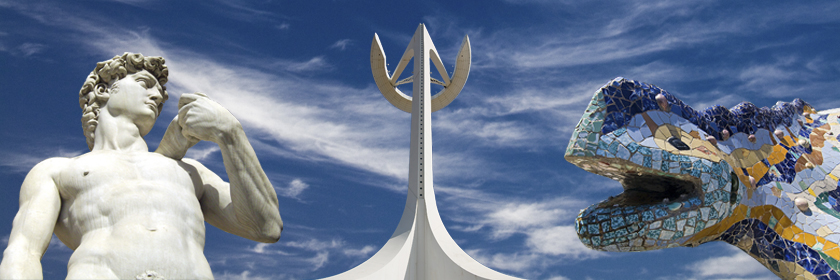








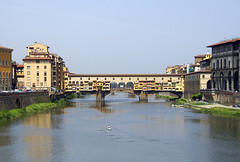




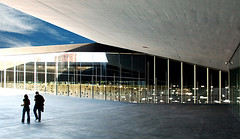



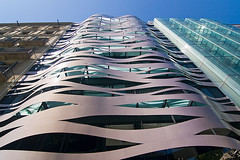



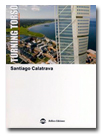

No hay comentarios:
Publicar un comentario